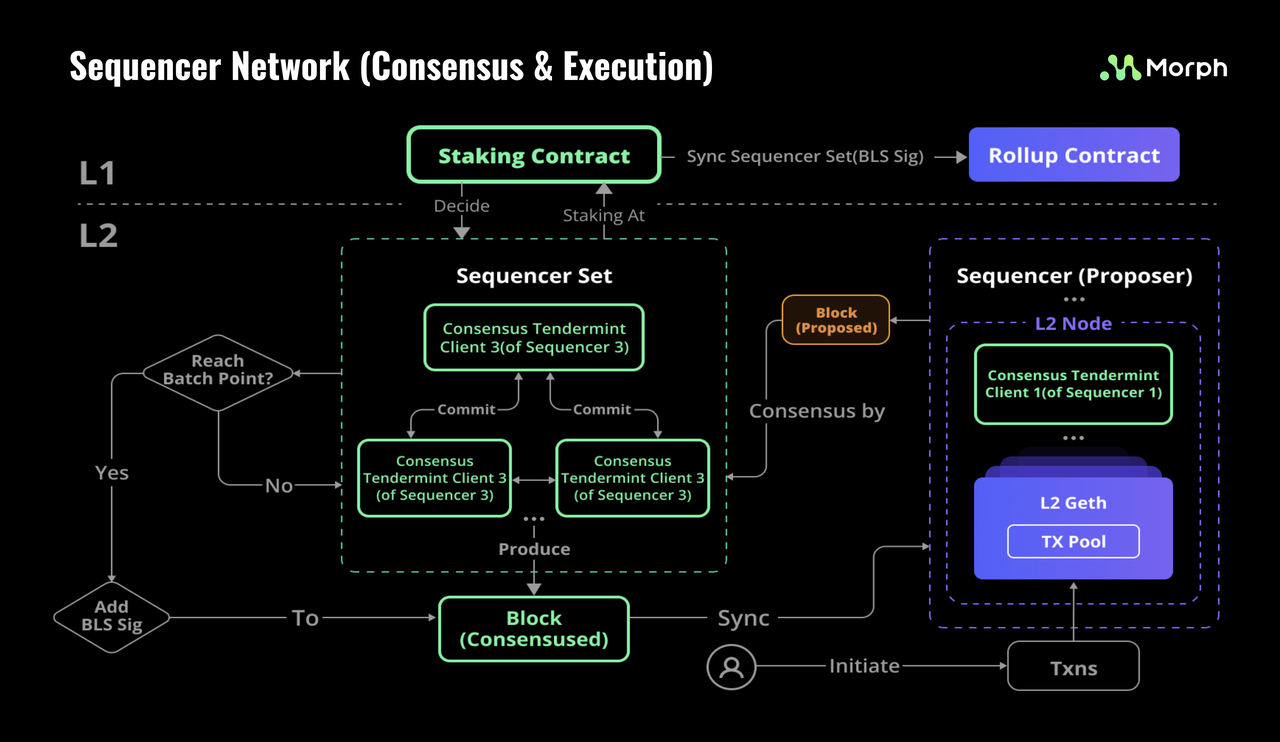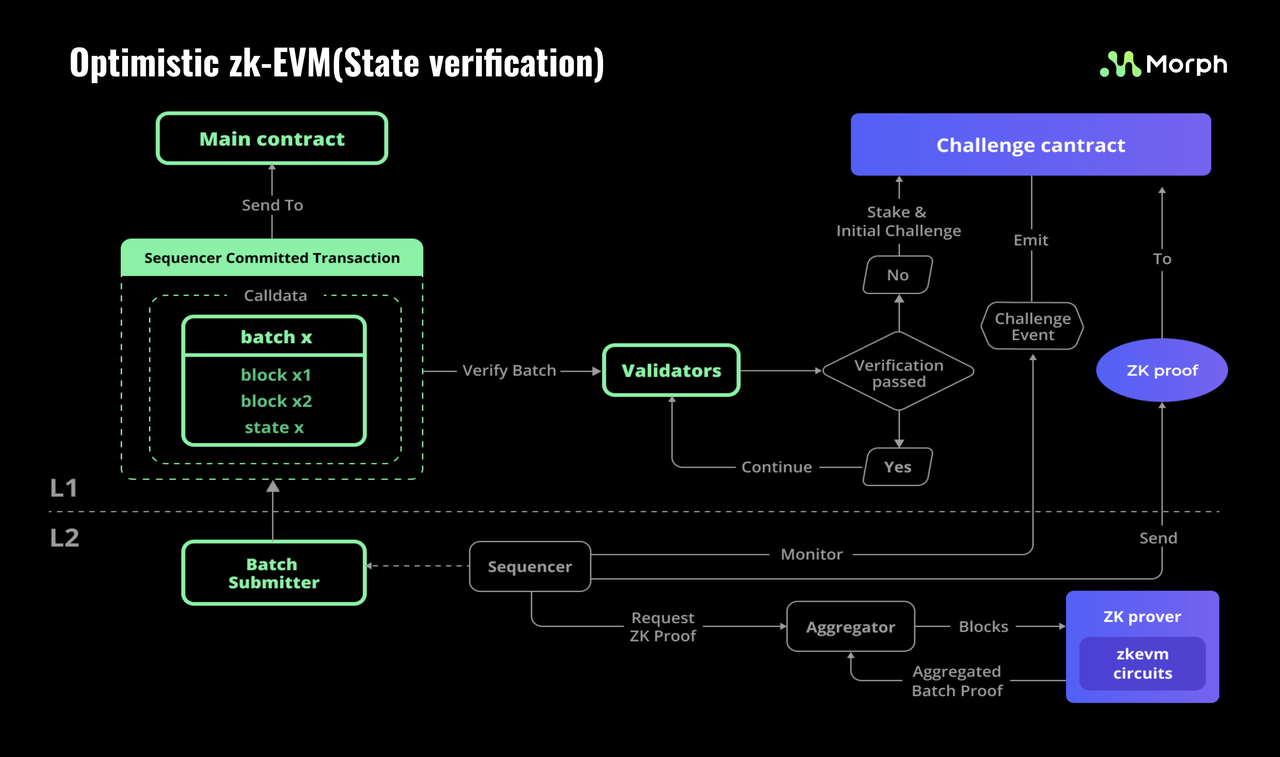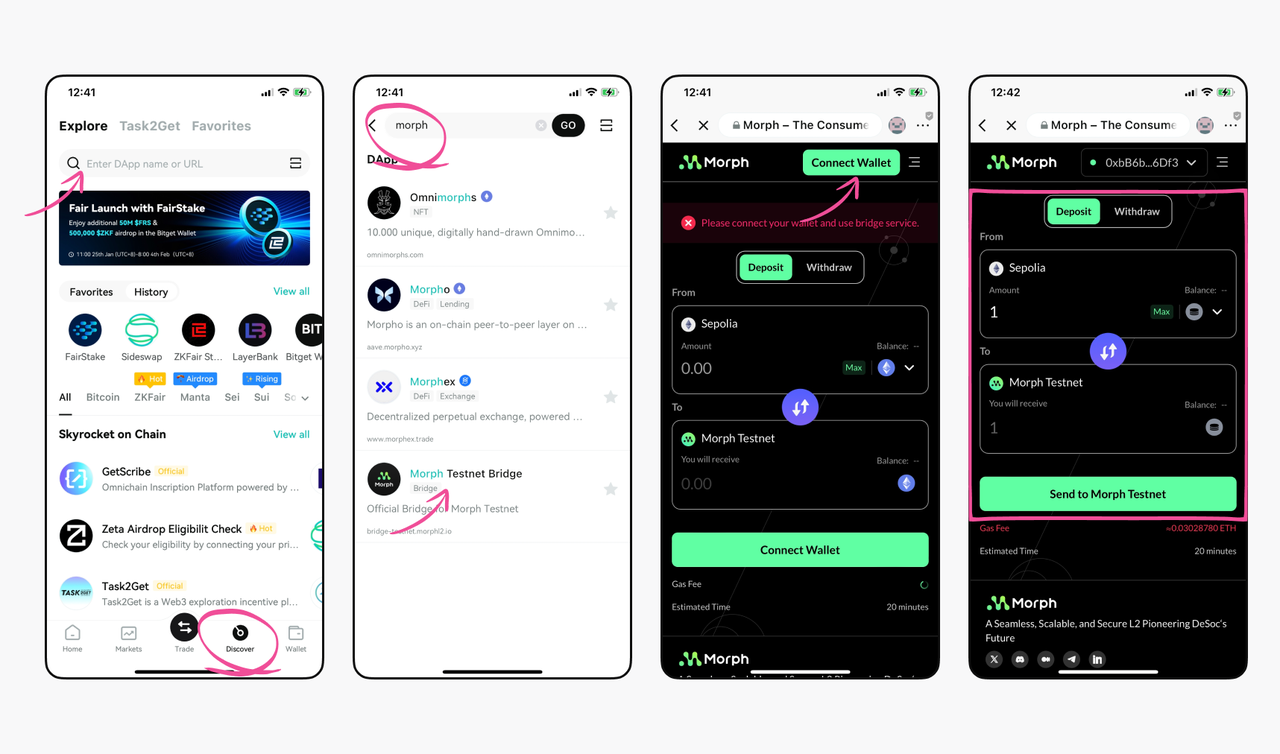Morph: Unlocking the Potential of Modular Blockchain Innovation

Blockchain technology has evolved significantly over the years, with innovations continuously reshaping the landscape. Among these transformative forces is Morph, an innovative player dedicated to making blockchain practical for everyday use. In this exploration, we delve into the intricacies of Morph, its groundbreaking technologies, and its mission to bring consumer-friendly blockchain experiences to the forefront.
Morph's Mission and Vision
At the core of Morph's ethos is a vision that goes beyond technological advancements. The platform draws inspiration from Morpheus, the Greek god of dreams, symbolizing not just visionary dreams but meticulous precision in execution. Morph envisions a future where blockchain seamlessly integrates into daily life, becoming as essential as any other digital service. The platform aims to democratize blockchain technology, making it decentralized, equitable, and accessible to everyone.
Morph's Architecture
The architecture of a typical Layer 1 blockchain can be broken down into four major layers:
-
Consensus: The mechanism through which network agreement is achieved.
-
Execution: Where transaction processing and smart contract operations occur.
-
Settlement: The process of finalizing transactions on Ethereum.
-
Data Availability: Ensuring that necessary information is accessible for validation.
Morph distinguishes itself through a revolutionary approach to Ethereum Layer 2 scalability. It leverages a combination of decentralized sequencer and optimistic zkEVM technologies, ensuring unparalleled security and performance.
The core architecture of Morph is organized into three functional modules: Decentralized Sequencer Network, Rollup, and Optimistic zk-EVM. Each module has distinct roles that collaborate in various configurations to meet diverse requirements, and fosters flexibility, adaptability, and composability within the system. This unique blend sets a new standard for Layer 2 solutions, offering developers cutting-edge tools and technologies to efficiently interact with the platform, supporting various operational needs.
Decentralized Sequencer Network (Consensus & Execution Layer)
One of Morph's key differentiators is its innovative decentralized sequencer network. Unlike conventional rollups, this network is engineered to optimize efficiency, reduce operational costs, and maintain decentralization. By employing a decentralized sequencer based on the robust Tendermint consensus mechanism, Morph addresses security concerns associated with centralized sequencers. This decentralized sequencer network efficiently processes transactions and achieves consensus within the Layer 2 framework, emerging as the primary interface for user interactions and facilitating the streamlined management of high transaction volumes.

Optimistic zkEVM Integration (State Verification)
Morph's commitment to user-friendly experiences is evident in the integration of optimistic zkEVM, which forms a critical step in validating Layer 2 states. The integration of Optimistic zkEVM not only ensures robust security but also streamlines the verification process with a significantly shorter challenge period.
This feature harmonizes the operational efficiency of optimistic rollups with the robust security attributes of ZK rollups. Remarkably, it achieves this while preserving a seamless and familiar development environment for Ethereum developers, positioning Morph as a versatile and secure platform for creating decentralized applications (DApps).

Data Availability (Rollup & Bridge)
Morph employs the 'Rollup' process as the linchpin that facilitates the smooth transfer of crucial information. This process begins with the careful compilation of blocks, where transaction data and relevant details are meticulously organized into coherent batches. This strategic batching ensures that the integration of data into Layer 1 transactions is a seamless and streamlined procedure.
Once the blocks are compiled into batches, Morph takes the next step by submitting these batches as Layer 1 transactions on the Ethereum Mainnet. This submission serves a dual purpose: not only does it ensure that the Layer 2 data is available and accessible on Ethereum, but it also establishes a secure and verifiable link between the two layers. The Layer 1 transactions act as a bridge, carrying the aggregated data and transactions from Layer 2 into the broader Ethereum network.

Future Roadmap of Morph
Currently, Morph is still in its testnet phase, and is primarily focused on establishing EVM Equivalence, laying the foundation for seamless integration with the Ethereum Virtual Machine. This pivotal step ensures compatibility with existing Ethereum applications, fostering interoperability and facilitating a smooth transition for developers and users alike. Additionally, Decentralized Sequencers will also be implemented during this current phase.
Moving ahead, Morph aims to hold its mainnet beta launch in Q2-3 or 2024, which will be characterized by the introduction of Optimistic zkEVM, Account Abstraction support on Arbitrum, and an Intent-Centric interface, which will help make user interactions with the platform more intuitive and user-friendly. Following its mainnet launch scheduled for Q4 of 2024, users can expect to enjoy a full decentralized stack on Morph, with support for zkDID and the Agent Framework, an innovative tool that empowers developers to create intelligent and autonomous agents within the Morph ecosystem.
Experience the Morph Testnet on Bitget Wallet!
Bitget Wallet now supports both the Morph testnet, as well as the Morph testnet bridge for users, providing a sneak peek into the intracies of Morph and its user interface.
Adding the Morph Testnet
Step 1: Tap on "View Assets" or select "Wallet" to enter into your main wallet interface.
Step 2: Tap on "All Mainnets" and choose "Add Mainnet"
Step 3: Select "Custom Net" or search for "Morph Testnet" and tap on the "+" icon. Proceed with the on-screen verification to add the Morph testnet to your Bitget Wallet.

Performing Cross-Chain Bridges to Morph
Now that you have successfully added the Morph testnet, you may begin exploring the Morph DApp and cross-chain bridge on Bitget Wallet.
Step 1: Tap on "Discover" on your Bitget Wallet homepage and key in "Morph" in the search field.
Step 2: Select "Morph Testnet Bridge" and enter into the Morph DApp.
Step 3: Tap on "Connect Wallet" and choose to connect using your Bitget Wallet.
Step 4: Fill in your transaction details and tap on "Send to Morph Testnet" to bridge your assets to the Morph Testnet.

Closing
Morph's vision culminates in a future where blockchain seamlessly integrates into the fabric of everyday life. By providing scalable, secure, and user-friendly Layer 2 solutions, Morph aims not just to create a platform but to shape an ecosystem where blockchain applications are as commonplace and essential as any other digital service.
Follow Bitget Wallet to stay up-to-date with all of our latest events, findings, and promotions, and let Bitget Wallet be your premier gateway into the Web3 space.
For more information, visit: Website | Twitter | Telegram | LinkedIn | Discord
For media inquiries, please contact: [email protected]
For business inquiries, please contact: [email protected]
About Morph
Morph is a transparent, community-driven Layer-2 solution. Combining the best of OP and ZK rollups, it offers unmatched scalability and security, aiming to lay a foundation for an ecosystem of consumer-focused, value-driven DApps.
Through its hallmark features, such as a Decentralized Sequencer Network, Responsive Validity Proof (RVP) system, and modular design, the project delivers efficient and flexible scaling while preserving the initial security, availability, and compatibility of the Ethereum network.
 No data found.
No data found.














